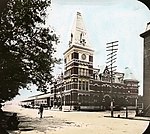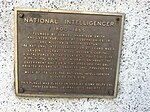Assassination of James A. Garfield
1881 in Washington, D.C.1881 murders in the United StatesAssassination of James A. GarfieldDeaths by person in New JerseyHistory of Washington, D.C. ... and 7 more
July 1881 eventsMedical malpracticeMurder in Washington, D.C.Political violence in the United StatesPresidency of James A. GarfieldUse American English from July 2022Use mdy dates from July 2022

James A. Garfield, the 20th president of the United States, was shot at the Baltimore and Potomac Railroad Station in Washington, D.C., at 9:30 am on Saturday, July 2, 1881. He died in Elberon, New Jersey, 79 days later on September 19, 1881. The shooting occurred less than four months into his term as president. Garfield's assassin was Charles J. Guiteau, who wanted revenge against Garfield for an imagined political debt and to elevate Chester A. Arthur to the presidency. Guiteau was convicted of Garfield's murder and executed by hanging one year after the shooting.
Excerpt from the Wikipedia article Assassination of James A. Garfield (License: CC BY-SA 3.0, Authors, Images).Assassination of James A. Garfield
Constitution Avenue Northwest, Washington
Geographical coordinates (GPS) Address Nearby Places Show on map
Geographical coordinates (GPS)
| Latitude | Longitude |
|---|---|
| N 38.891944444444 ° | E -77.020277777778 ° |
Address
Constitution Avenue Northwest 526
20004 Washington
District of Columbia, United States
Open on Google Maps









